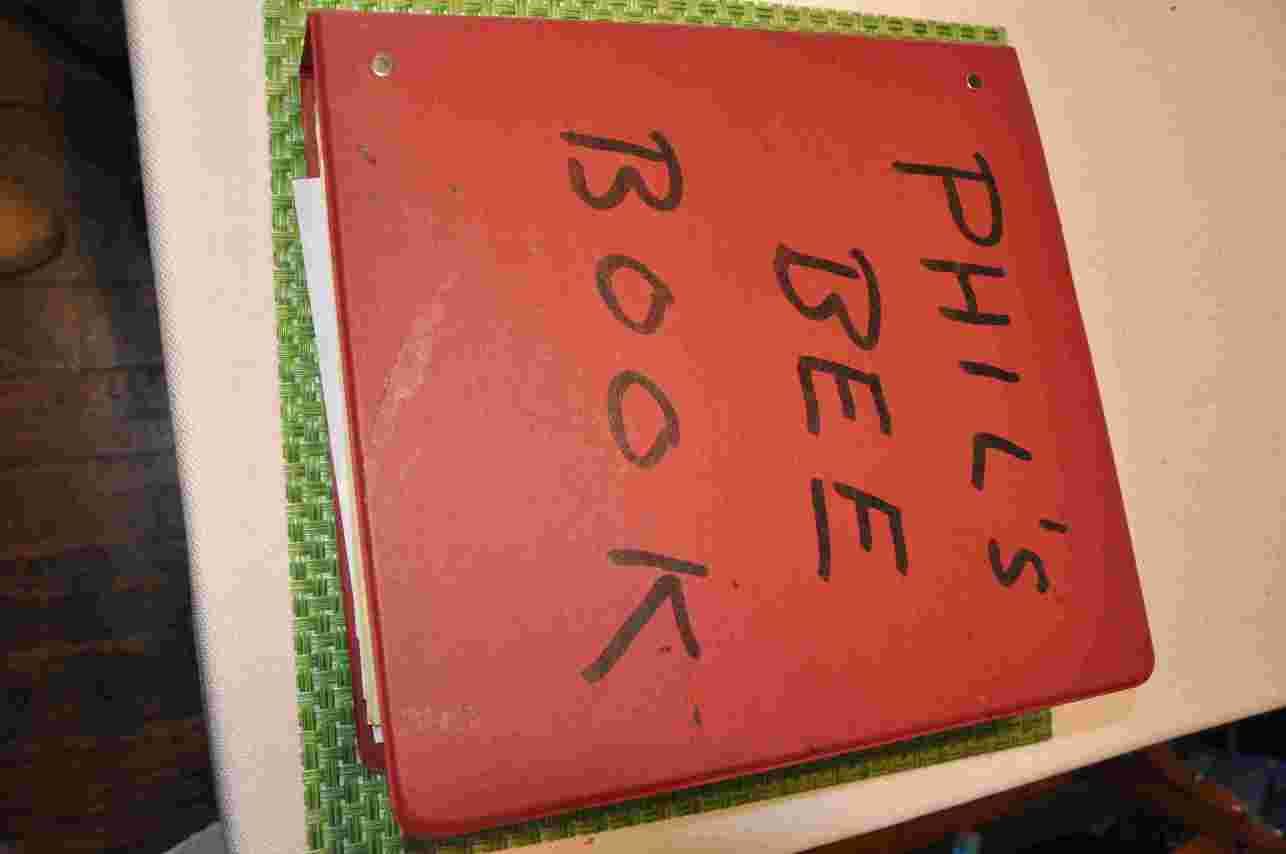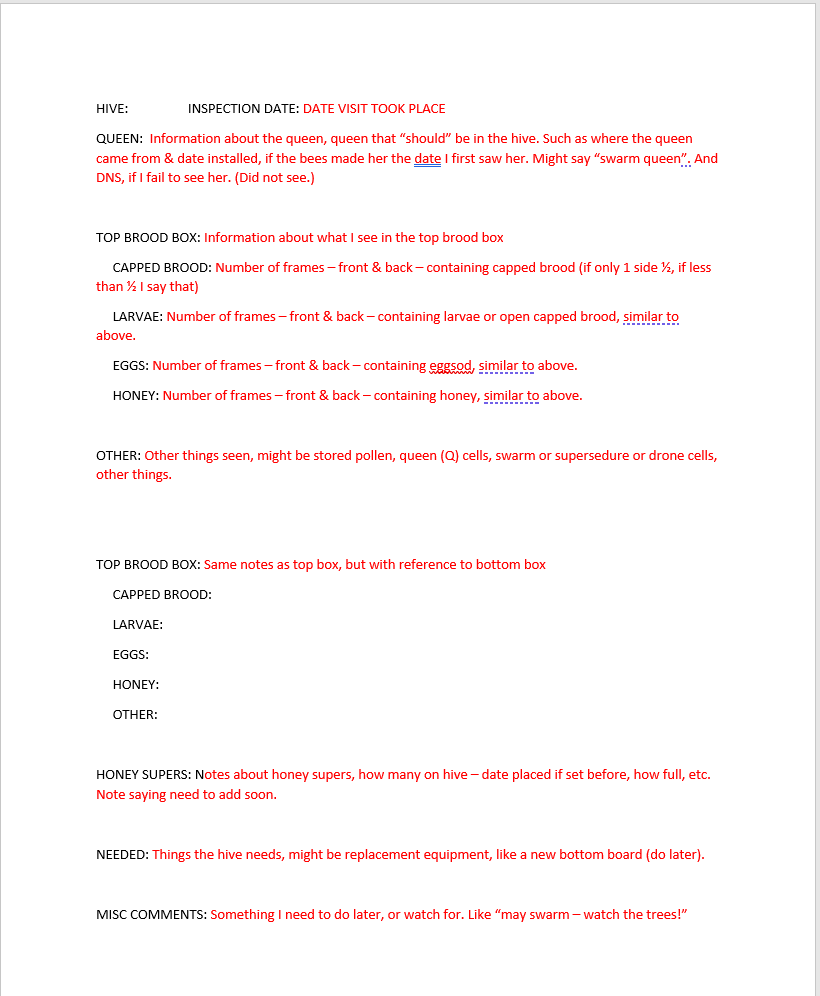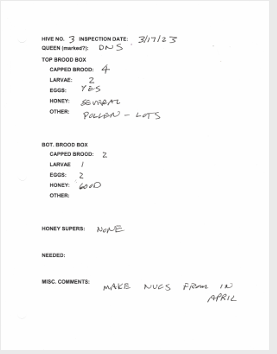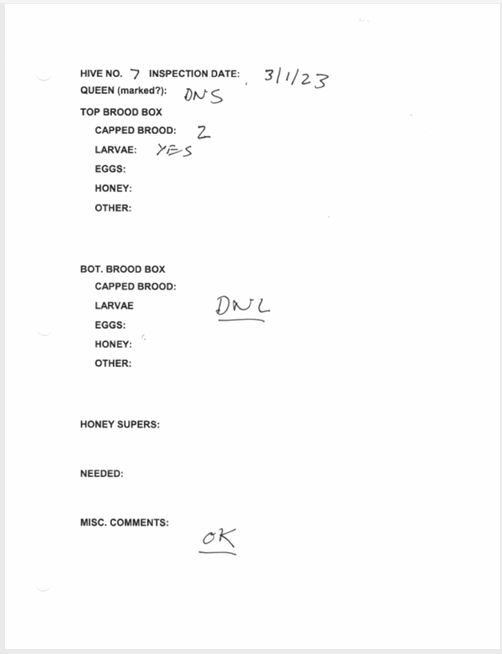If you have more than one or two colonies, it is important to maintain a record of your hives, and what you find inside them on your visits. In the spring our hives will grow, increase the amount of brood in them, their honey bee population, along with such activities like the start of swarm preparation, as well as increased nectar collection. We need a record of the past status of the hive to be aware of the growth and change of what is happening in the hive within the colony. There are many ways to do this, including keeping records on your computer, or cell phone, but I have a fairly simple written system that I employ, which I will share with you. This system works well for me.

I use a 3 ring notebook, exactly like I used many years ago in school, along with page dividers, which are labeled with the number of my hives – 1, 2, 3, etc. Each page divider represents & holds the record sheets for a different hive. Then I have a simple form, with headings of information that I collect & record each time I look in my hives. Information – as you can see below, includes the hive number, the date that I checked the hive, a line for information about the queen in the hive, information about each brood box, honey supers on the hive, as well as a place for ‘other information’ and what else ‘needs to be done in the hive’ at a later date. I have a blank form on my computer, which I print out, retaining copies of the blank form with punched holes to be placed in the notebook, under the hive number for each hive. Below is a copy of that record form, with notes in red about what I record on the forms each time I look in that hive.

I often make up abbreviations. For instance, if I did not see the queen – which is often, I will write “DNS” which means I “did not see" her today. If I only looked in the top box, I might write “did not look” or “DNL” out from bottom box. The important thing is to make some sort of note recording what I saw when I looked into a hive. Leaving that sheet with notes in the notebook, under the divider for that hive number. Then the next time I look in that hive, I look at the hive record sheet and the notes I made that last time I was in that hive, just before rechecking the hive. The new sheet goes on top of the one from the last visit. This way I can tell what has changed in the hive since the last visit. I do not depend on my memory, but on my written notes. What I write down depends on the season, and what is going on in my hives during that season. Right now (in March) the emphasis is growth of brood in the hive. April it may be concerns about possible swarming. And later honey supers. If you only have one hive you might remember from one visit to another, but not if you have 5, or 10, or more. You need notes.
I am only talking about one system, the system that I use. These forms originated from a similar record keeping system employed by a Jefferson County beekeeper, and the late Owl Landon. I have know beekeepers that use a bound record book, others a system similar to mine - but with only blank pages that they make notes in as needed at the end of each visit. One person I know used blank sheets for each hive that he placed in a Ziplock bag, and placed on top of the empty cover. The main point is to maintain the records.
Below are some examples of what one might see in my “Bee Book”. But adapt, make up your own system of notation. And here is a blank form, but you can use this as a model, and make up your own form. Overlook my chicken scratch, some days I cannot read my own writing, I hope that you can.


